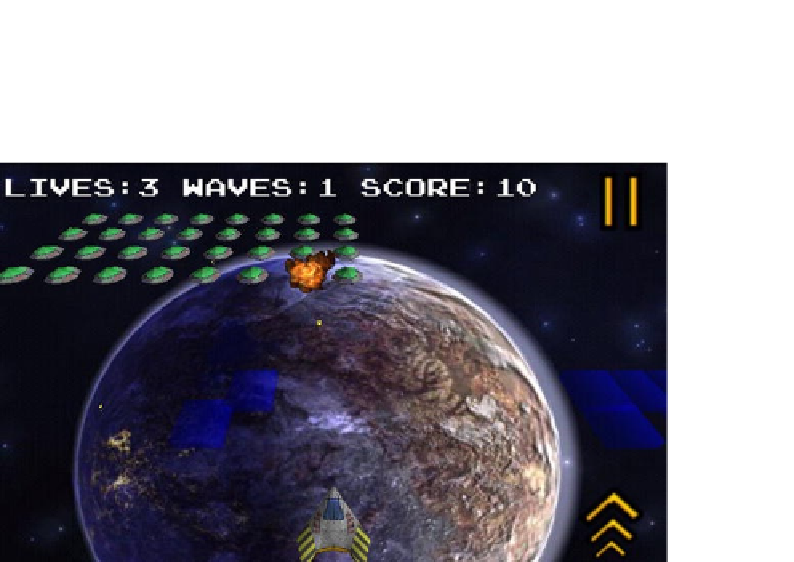Game Development Reference
In-Depth Information
The art style will be a little retro when it comes to the GUI, using the same old-fashioned font we
used in Chapter 9 for Super Jumper. Our game world itself will be displayed in fancy 3D, with
textured and lighted 3D models. Figure
12-3
shows what the game screen will look like.
Figure 12-3.
The Android Invaders mockup. Fancy!
The music will be a rock/metal mixture, and the sound effects will match the scenario.
Defining Screens and Transitions
Since we have already implemented help screens and high-scores screens twice, in Chapter 6's
Mr. Nom and in Chapter 9's Super Jumper, we'll refrain from doing so for Android Invaders; it's
always the same principle, and a player should immediately know what to do once he or she is
presented with the game screen, anyway. Instead, we'll add a settings screen that allows the
player to select the type of input (multitouch or accelerometer) and to disable or enable sound.
Here's the list of screens for Android Invaders:
A main screen with a logo and PLAY and SETTINGS options.
ï?®
A game screen that immediately starts with the game (no more READY?
ï?®
signal!) and also handles the paused state (with RESUME and QUIT options)
and displays GAME OVER once the ship has no more lives.
A settings screen that displays three icons representing the configuration
ï?®
options (multitouch, accelerometer, and sound).
This is very similar to what we had in the previous two games. Figure
12-4
shows all the screens
and transitions.

